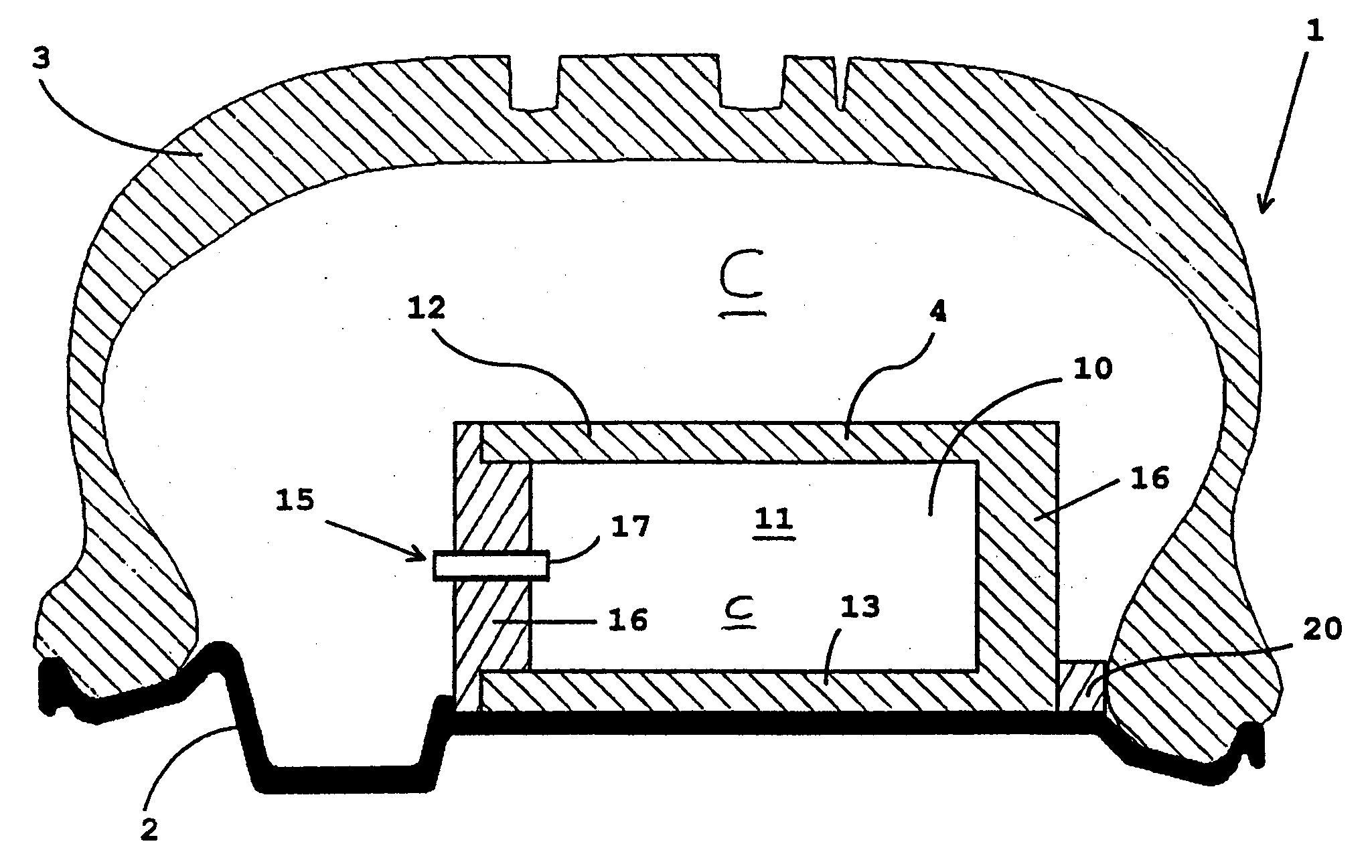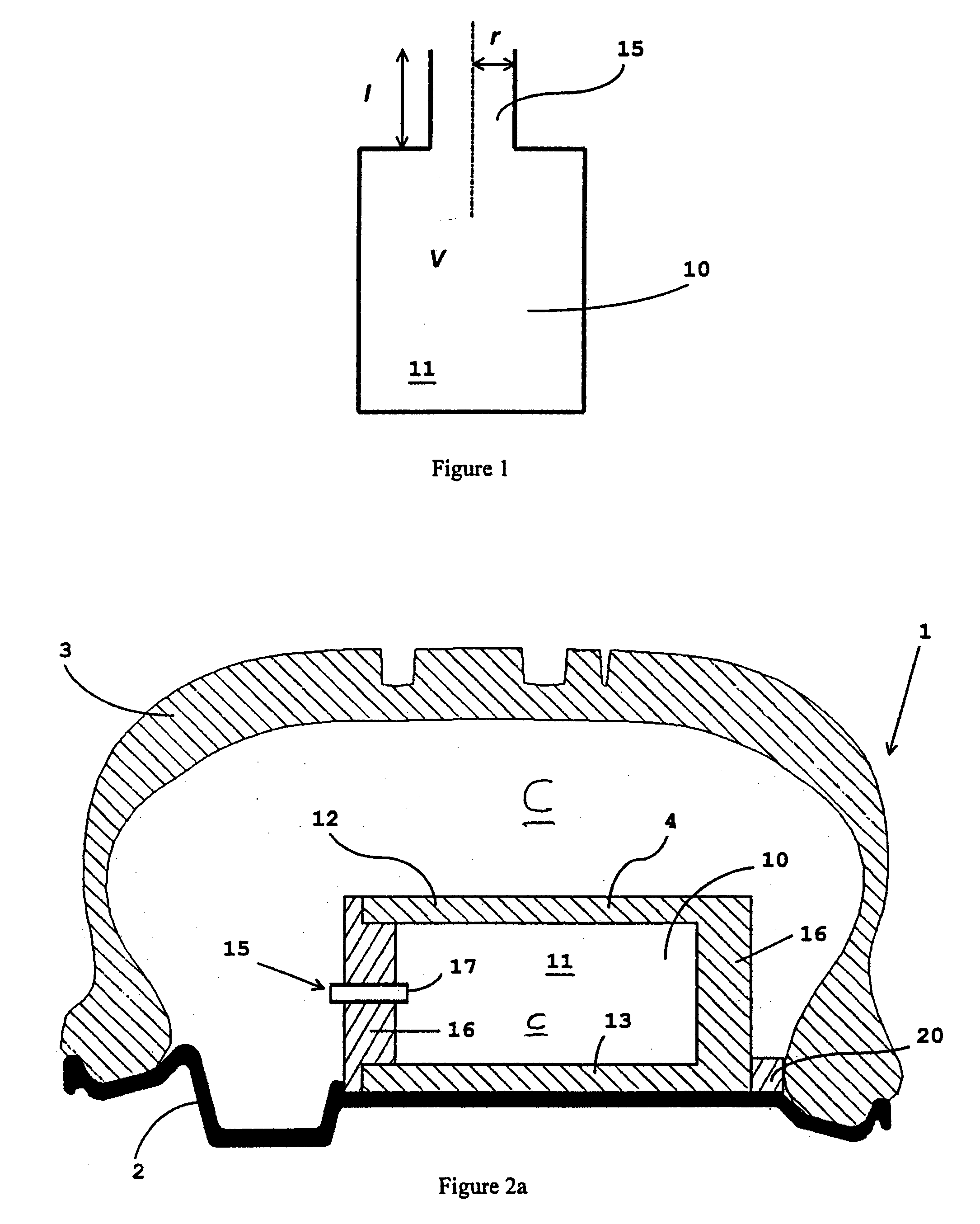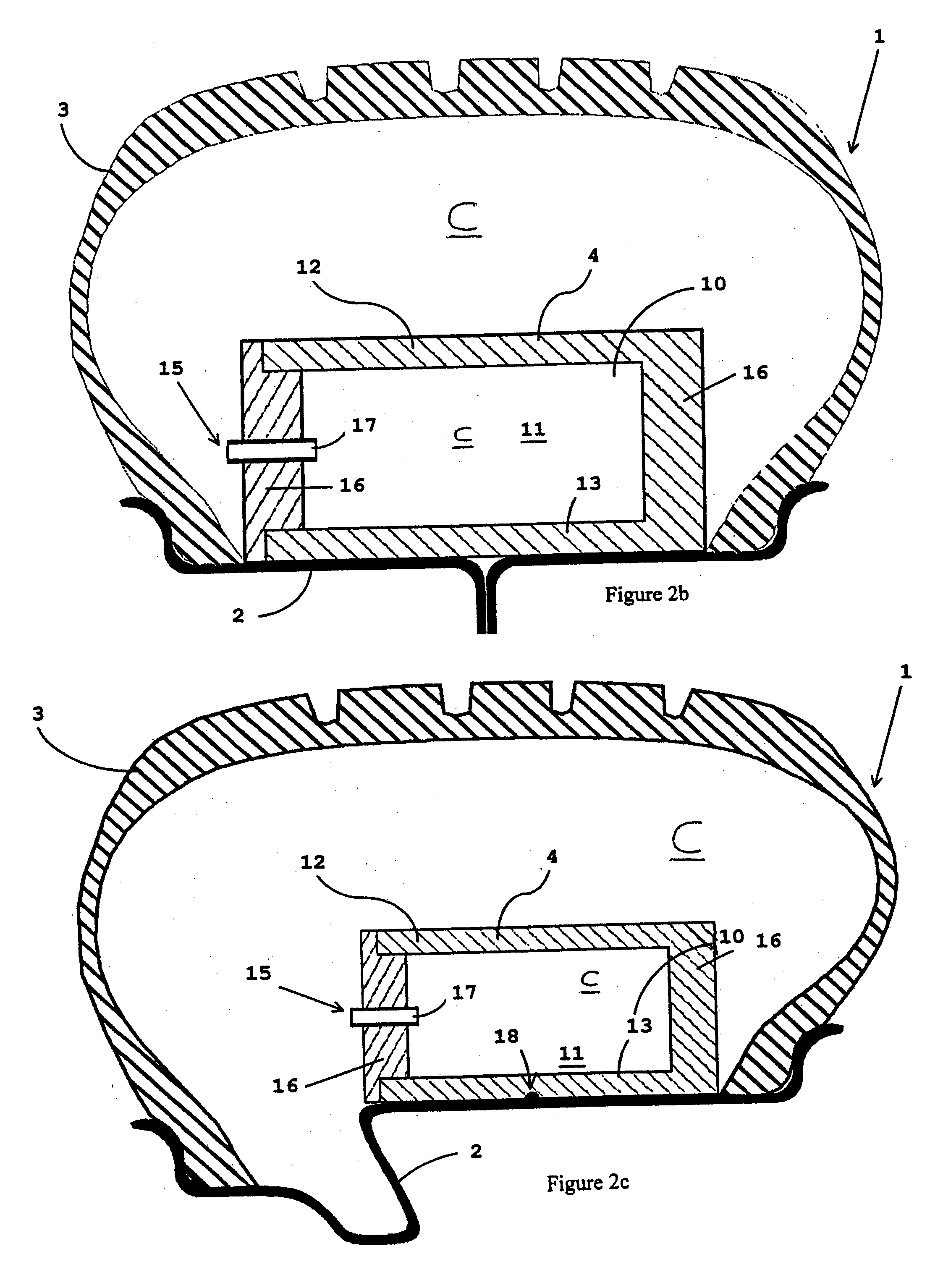Safety support with a noise attenuator for a vehicle wheel
a technology of safety support and vehicle wheel, which is applied in the direction of inflatable tyres, tyre beads, transportation and packaging, etc., can solve the problems of supplementary costs, material and manufacturing time, and adding an additional mass
- Summary
- Abstract
- Description
- Claims
- Application Information
AI Technical Summary
Benefits of technology
Problems solved by technology
Method used
Image
Examples
Embodiment Construction
FIG. 1 illustrates diagrammatically the principle of operation of a Helmholtz resonator 10. Such a resonator includes a cavity 11, defining a volume V and having an opening or neck 15 of radius r (or section a) and of length 1. This arrangement provides a mode of vibration at a given frequency. It is in fact the volume of air, or of a given gas, contained in the neck 15 which is caused to move in an oscillating movement. It may be likened to a small mass; the cavity of the resonator then acts as a spring on which the mass bears. In the case in which the opening of the cavity is circular, the frequency of this resonator is provided by the following relationship:
f.sub.H (k / 2.pi.)X(a / l'V).sup.1 / 2 (1)
The frequency, therefore, depends only on the speed of the sound k and the dimensions of the resonator.
In Equation (1), 1' is the apparent length of the neck of the resonator. For a cylindrical neck of radius r (section a=.pi.r.sup.2), this apparent length is calculated as follows:
l'=1+1.5 ...
PUM
 Login to View More
Login to View More Abstract
Description
Claims
Application Information
 Login to View More
Login to View More - R&D
- Intellectual Property
- Life Sciences
- Materials
- Tech Scout
- Unparalleled Data Quality
- Higher Quality Content
- 60% Fewer Hallucinations
Browse by: Latest US Patents, China's latest patents, Technical Efficacy Thesaurus, Application Domain, Technology Topic, Popular Technical Reports.
© 2025 PatSnap. All rights reserved.Legal|Privacy policy|Modern Slavery Act Transparency Statement|Sitemap|About US| Contact US: help@patsnap.com



